Guinea-Bissau’s Only Travel Guide You Need For A Great Trip in 11 Easy Steps
- Destinations Africa
Cruisit Team
- October 22, 2022
- 0
- 4927
- 77 minutes read
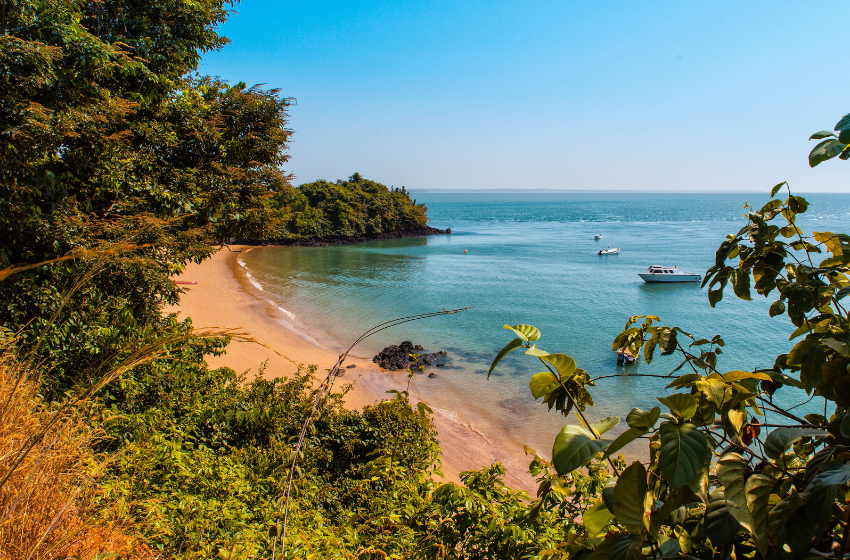
Much of Guinea-Bissau’s pre-colonial history is unknown since it was not recorded until after the country was conquered. On the other hand, it’s speculated that people have lived there for at least a thousand years. In the beginning, they lived as hunter-gatherers, but now they use iron tools to farm and raise crops. Some of these farmers migrated to the coast when the Mali empire expanded interior in the 13th century, while others joined with the invading Mande. Gold, slaves, and sea salt were all sent to the interior of the empire from Guinea. As Mali’s influence developed, it maintained a system of decentralized kingdoms and farims whose role it was to ensure the smooth movement of tribute products and troops. The farmers of what is now Guinea-Bissau regularly bore the brunt of Kaabu, a state whose economic and military needs resided in what is now Guinea-Bissau. The Fulani people, seminomadic herders, initially appeared in the area in the 12th century, however it wasn’t until the 15th century that they came in any great numbers. At initially, the Africanized version of Islam practiced by the Fulani herders and the Mande farmers and traders were both subject to the Kaabu ruler. However, European conquerors were not far off. Portuguese explorers and merchants initially established touch in the early part of the 15th century.
Exploration and commerce along the coast of Upper Guinea were initially dominated by the Portuguese in the late 15th and early 16th centuries, before the French, Spanish, and English entered the fray in their pursuit of Africa’s riches. When the Portuguese controlled Guinea-Bissau, they forced tens of thousands of locals to labor on plantations in neighboring Cape Verde. Produced on these farms included cotton, indigo, orchil, and urzella colors, rum, hides, and livestock. This practice persisted far into the nineteenth century. Warring factions in Guinea-Bissau and the surrounding areas captured and enslaved individuals living on the shore or in the interior. Kaabu’s rule saw frequent attacks against the Fulani people. The Fulani’s 1867 fall of the Kaabu kingdom caused a dramatic increase in the number of Mande documented as slave ship passengers. Slaves were herded by grumetes into barracoons along the coast at Cacheu, Bissau, and Bolama, where they were kept in temporary cages known as coffles. The tangomo (who also translated and worked as a go-between) would arrange the sale of slaves to the lancados and senhoras. Women of mixed ancestry who dealt in slaves were known as lancados and senhoras. The major reason there are three Guineas in the modern era is the European powers’ quest for Africa in Guinea. As a result of the brutality of the Portuguese and their mercenaries, the people of Guinea fought back and revolted whenever they could; the last major uprising was in 1936. Most countries in western Africa achieved independence by the 1960s, and Guinea-Bissau joined that group in 1973 following a bloody war of independence. But like most of postcolonial Africa, Guinea-Bissau was devastated by tyranny, internal disputes, rebellions, and civil war. Unfortunately, drug smuggling just makes things worse in an already challenging scenario for the country. As the 21st century’s first quarter progressed, the country was rocked by mutiny, coups, and assassination attempts, and domestic instability added fuel to the fire. In any case, due to renewed optimism on the part of investors and foreign donors, capital was re-introduced, helping to kickstart the economy. Today, tourism in Guinea-Bissau is a young business and a widely misunderstood notion.
Nobody outside of Africa knows that Guinea-Bissau exists, and the few who have heard of it have labeled it a dangerous place to visit. Set between Guinea and Senegal on the Atlantic coast, this West African nation exemplifies Africa’s penchant for showing off its many faces. Guinea-Bissau’s history since independence is chaotic, but it appears like it is starting to take a turn. As a result, more and more people are including it on their trip itineraries; those who go there will be rewarded with interesting wildlife, a bustling capital city, and a populace that loves to go out. The beauty and imperial grandeur that have gone in Guinea-Bissau, as well as the country’s amazing natural riches, are proof that certain things are more important than politics.
Guinea-Bissau is the epitome of the adjectives “remote” and “untouched.” These characterize the country’s gorgeous woodlands, lovely beaches, and amazing wildlife. Friendly, genuine, laid-back, and one-of-a-kind best describe the wonderful country of Guinea Bissau. The country has a rich colonial past, but it also boasts several indigenous cultural reserves and stunning natural attractions, both on the mainland and its spectacular offshore islands.
Even with all the issues, the people here are some of the most welcoming you’ll ever encounter. A country where people constantly developing new chances for themselves and each other by working hard to make the future better. Where is the most breathtaking view that every photographer would like to preserve forever? A country with such extremes in climate and landscape that it’s difficult to pick just one reason to travel there.
Less than two million people call this country home, and it has roughly a hundred islands. A nation where 30% of the land is lost every year because the eight major rivers that traverse it flood during the rainy season. Besides the official language Portuguese, which is spoken by only roughly 13% of the population, and the unofficial language Creole, which is spoken by everyone, this country is home to more than twenty separate ethnic groups and a number of distinctive unique languages.
Including a diverse range of landscapes, peoples, civilizations, and flora and animals, this small treasure might be thought of as a miniature representation of all of Africa. The entire region is easily accessible from Bissau, the capital. The Bissau-Guineans’ jokes are loud yet gentle, like their music, and the sauce that comes with your grilled oysters will have quite a kick to it.
“A wild and genuine West African country. From its offshore archipelago to its verdant jungles and plunging waterfalls, this country is a natural paradise. It’s hard not to fall in love with Guinea-Bissau, with its kind locals and diverse cultural traditions, cuisine, and diverse people.”
Tourists from the West are scarce in this former Portuguese colony, but those who do visit will be rewarded with unforgettable experiences and memories of a stunning region of Africa. It is suggested that you join a small group lead by a local expert if you plan on exploring Guinea-Bissau, as the country can be difficult to navigate on your own. An airport in Bissau sees heavy morning traffic with planes landing and taking off. If you don’t want to fly, you’ll have to take the overland route, which has some rough pavement. The picturesque coastline of Guinea-Bissau, which includes multiple lagoons and extensive tidal estuaries backed by mangrove swamps, will be explored by boat along with the other visitors. The view from a private aircraft flying over the Bijagos Islands is breathtaking and should not be missed on any vacation.
Bissau is the gateway to the UNESCO-listed Bijagos Islands, an archipelago of more than 80 islands—the most numerous in Africa—of which less than a quarter is inhabited. An archipelago where time has stood still and just a few of the islands have been touched by contemporary civilization. Trying to find pygmy hippos, also called salt water hippos, is a true adventure. These hippos are extremely difficult to notice because of their small size and the fact that they are endangered. The secluded and uncharted piece of paradies also give magnificent beaches, lush tropical woods, and turquoise streams, but also soul enthralling sacred events. Many migrating birds spend the European winter in the waters around the 80-plus island archipelago, which have a total area of 12,950 km2. The archipelago is frequently cited as the most memorable part of any visit to Guinea-Bissau.
For those who enjoy being outdoors, both the Cacheu Mangrove Forest and the Cantanhez Forest provide enough opportunities to see wildlife in their natural habitats. With hundreds of species to spot, make sure to carry your binoculars. From the hard-to-find hippos in the ocean to the usual suspects on an African safari: lions, leopards, elephants, and crocodiles. But since this is West Africa, chimpanzees are among among the gorgeous species you may encounter. Location on the Atlantic Ocean also increases the variety of marine species you may see there; in addition to killer whales, dolphins, and other sorts of whales, African manatees may be seen in mangrooves and shallow areas. Guinea-Bissau is a haven for birdwatchers, with hundreds of species to be seen, including the Black Crowned Crane, Flamingos, Giant Kingfisher, Long-crested Eagles, and the beautiful Great Blue Turaco.
Guinea-Bissau is not a place for the faint of heart, but for those with a love of adventure and a flexible schedule, it may be an unforgettable experience. Despite political unrest and widespread poverty, this once-proud nation is thriving because to its resilient people and their undying zest for life. Bissau may have a plethora of potholes and an unreliable power grid, but the aging capital city also exudes an endearingly rough and historic character. Like a faded model, the city’s colonial elegance has dimmed since its Portuguese heyday, but it retains a charming glint in its eye and a kind personality that draws in tourists. It’s compact and simple to get about, and there are a number of exciting pubs and restaurants offering authentic tastes of the local culture.
You might be wondering, “Why go to Guinea-Bissau?” This once-Portuguese colony now has a diverse culture, a thriving way of life, and stunning natural characteristics. When you pull up a map of Guinea-Bissau, the sea’s striking blue color immediately leaps out. Traveling to Guinea-Bissau is like taking a trip to the epicenter of West African extremes. The fact that you will be seeing a relatively undiscovered region of Africa is likely to be the highlight of your trip. Here, you can look forward to real interactions with locals and relish in the knowledge that you will be among an exclusive few to have ever been here.
Travelers should be aware that Guinea-Bissau is not well prepared to accommodate them, yet the country’s hidden riches are guaranteed to excite the interest of the most courageous explorers. Even though there aren’t many famous structures in the capital city, it’s surrounded by lovely green spaces and parks. Beautiful Faranah is well regarded as the country’s “party town” due to its many nightclubs, restaurants, and pubs, as well as its magnificent mosque, which creates a breathtaking silhouette against the gorgeous sunset.
Keeping active will let you take full advantage of all that Guinea-Bissau has to offer. This Cruisit Guinea-Bissau travel guide features a schedule that lets you have fun and see the sights. Get yourself to this undiscovered colonial paradise in West Africa as soon as possible. The following itinerary is designed for the high season in Guinea-Bissau, but may also be enjoyed in the off-season. Your greatest fantasies will come true in Guinea-Bissau, where you may spend days in the company of legend, or in the midst of lush peaks and dramatic mountains and picture-perfect scenery, and where you can spot hundreds of species while exploring on your walks.
To top it all off, we’ll provide you a complete travel guide to Guinea-Bissau so you can easily move throughout the country. Keep reading to find more about the top cities, landmarks, modes of public transportation, and other attractions Guinea-Bissaue has to offer. Let’s get going if you’re fired up about it.
- Go to the National Museum and learn about the country’s history.
- Discover one-of-a-kind souvenirs at the Central Market.
- Bissau Velho’s deteriorating Colonial District
- The principal harbor of Porto Pidjiguiti, sometimes known as Porto of Bissau, is worth a visit.
- Take a hike and see the sights of Quinhamel.
- The Mar Azul Fishing Trip
- See the Holy Island of Rubane.
- Cruise The Bijagos Islands include Orango Island, where you could see pygmy hippos, which are the only marine hippos in the world.
- Learn about the harmonious coexistence of several different religious groups that live on the islands.
- Be patient in Bissau, Guinea. A lot of things may move at a slower clip than normal, and the locals may give off a cold vibe.
- There’s a chance you’ll be hassled at the airport, and getting through the check-in queues will take forever. Get copies of your work printed.
- The location is accessible by both ground and air routes. However, land border clearance is complicated, so flying in is recommended. You should also think about the roads, which are really bad. In addition, you’ll be hassled by the cops any chance they have. Darn it, take the damn flight already!
- To reiterate, the vast majority of African nations are warm and kind. At first glance, you might assume that people in Guinea-Bissau aren’t going to be that interested in what you’re offering. But the people of Guinea-Bissau are warm and kind, full of genuine smiles and helpfulness.
- The best places in Bissau to exchange money are Ecobank, BAO, and Casa Cambio Nacional.
- A few banks and hotels in Bissau, such as the Malaika and the Ledger Plaza, have ATMs that accept foreign MasterCard and Visa cards.
- The Euro is more widely accepted in Guinea-Bissau than the United States dollar, so bring enough with you.
- It is customary to haggle over prices in markets, specialty stores, and from street sellers. This is done in a friendly manner, without anger.
Crime & Scams in Guinea-Bissau
Corruption is pervasive in Guinea-Bissau, as it is elsewhere in West Africa, which contributes to the increasing crime. High levels of petty crime and moderate levels of violent crime are an issue in the country. Although violent crime rarely targets tourists, you must be mindful and avoid wandering the streets alone, especially at night. Try to avoid going between cities or at the borders without a professional guide or on a tour, as bandits could stop and rob you. So do not underestimate the severity of the problem in Guinea-Bissau with its law enforcement. Unfortunately, to add fuel to the fire, Guinea-Bissau is also a hotspot for drug lords and smuggling, which contributes to more crime. The country has endured coups, mutinies, rebellions, and civil wars, but it is far from being a stable country. This means that at any time, things could go south. So, avoid protests and large gatherings of people. Also, stay away from large-scale military presence and political demonstrations of any kind. If you are arrested, detained, or in need of consular help in an emergency, you will have a considerably more difficult time because many western nations do not have diplomatic representation in Guinea-Bissau. Unless you are part of humanitarian aid, white people may be at an increasingly high risk from racist natives.
Given that Guinea-Bissau is not a secure destination for any kind of tourist without a guide, it is especially true for solo women, it is important to take precautions. If you are a woman planning to go to Guinea alone, it is imperative that you take all necessary safety measures, adhere to all relevant rules, and pack appropriately stocked emergency supplies, but more than anything, stick to tours with professional guides.
Be especially cautious if you are in public places frequented by foreigners, near official buildings, popular tourist sites, or on public transit. Avoid going to slum regions of the city. Take extra precautions on city streets, especially after dark or if you are alone. Carry no significant sums of money or wear expensive watches or jewelry. Avoid using your phone while walking down the street.
Healthcare in Guinea-Bissau While Traveling
The residents of Guinea-Bissau face unique obstacles when trying to get healthcare due to the fact that most public healthcare clinics are more than 5 kilometers away. The Ministry of Health barely oversees 8 hospitals, and there is only around one doctor for every 5,000 citizens. You should be well-insured in case of an emergency, as medical resources in Guinea-Bissau are severely limited and many hospitals are not completely operating or well-equipped. In severe cases, you may need immediate medical evacuation.
Always check that your immunizations are up to date before leaving on a trip. Chickenpox (Varicella), diphtheria-tetanus-pertussis (DTP), influenza (flu), measles-mumps-rubella (MMR), polio, hepatitis, typhoid, and shingles vaccinations are among the most widely prescribed vaccines in the world. A rabies shot is something to think about if your plans include interacting with wild animals. Insect-borne illnesses such as yellow fever, malaria, and filariasis are widespread. Take your vaccines and bring your prophylaxis medications with you. Be sure your lodgings are free of insects. Put on some bug spray. Due to the high prevalence of HIV/AIDS in the country, visitors are advised to take all necessary safety measures and to insist, if receiving medical attention, that only brand-new, disposable supplies be used.
When visiting Guinea-Bissau, you are not legally required to purchase travel medical insurance. But, it is always important to have comprehensive medical coverage when traveling because you never know what you could encounter while overseas, especially if in the event of an emergency, a medical evacuation is a must for your safety.
Only eat foods that are cooked and served hot, avoid food that has been sitting on a buffet, and eat raw fruits and vegetables only if you have washed them in clean water or peeled them.
Only drink beverages from factory-sealed containers, avoid ice because it may have been made from unclean water, and only drink pasteurized milk.
Wash hands often with soap and water for 20 seconds, especially after using the bathroom and before eating. If soap and water aren’t available, use an alcohol-based hand sanitizer that contains at least 60% alcohol. Also, keep your hands away from your face and mouth.
Located on Africa’s western coast, Guinea-Bissau has a hot and humid tropical climate. It is made mostly of flatlands near the coast and rolling hills inland. There are two main seasons in Guinea-Bissau and they are the dry and wet seasons, with a swift transitional period between them. It is hot, humid, and partly cloudy in the dry season, and hot, humid, and overcast in the rainy season. Temperatures typically range from 19°C to 35°C, with temperatures rarely dropping below 17°C or rising above 38°C. The best time to visit Guinea-Bissau is during its dry season. Avoid the wet season since flooding occurs, with most of the roads being impassable.
Shoulder Season
In Guinea-Bissau, the dry and wet seasons are separated by a brief transitional period in May and October, which is the shoulder season months. Third warmest after March and April is May. With the increased likelihood of precipitation, the air becomes somewhat more muggy than it was during the preceding dry season. Guinea-Bissau is nevertheless a pleasant destination in May. In terms of the weather, November is the conclusion of the rainy season and is similar to May in terms of temperature and precipitation. However, the humidity is intolerable because of all the rain that fell throughout the wet season, and it might still be partially overcast. The months of November and May are great alternatives to the busiest times of the year. In May, the water is around 27 degrees Celsius, and in November, it is about 29 degrees Celsius.
High (Peak) Season
From December through April, the weather in Guinea-Bissau is dry and somewhat comfortable, making it the peak season for tourists. This is in contrast to the extremely humid rainy season. From December to April, the harmatan, a warm, dry breeze from the Sahara, blows, making the weather ideal for going about one’s daily life. It is the warmest time of year, with temperatures averaging between 32 and 35 degrees Celsius (90 and 95 Fahrenheit), and occasionally reaching 38 degrees Celsius. While December and January are the coldest months, March is the warmest. Now is the time to visit Guinea-Bissau, when temperatures are milder and the humidity is lower, making it ideal for sightseeing and other outdoor pursuits. You’re also safe from the flooded roadways that occur during the rainy season.
Off-Season (Low Season)
From June to October, Guinea-Bissau has its wet season and hence its off season. Most of the year’s precipitation falls during this time, and the resulting floods can derail even the best-laid preparations. As far as rainfall goes, August is far and away the worst month. The whole season is characterized by persistent cloud cover and scant sunshine. Humidity during the wet season may make life difficult to the point of becoming intolerable. Unless you want your vacation plans messed up, now is not the time to take a trip.
By Plane
Osvaldo Vieira International Airport (OXB), located about 11 kilometers from Bissau, is the primary entrance point into Guinea Bissau. Also, it’s the biggest airport in all of Guinea-Bissau. Across six different nations and six different cities, there are a total of six airports that provide direct flights to Bissau. Ports of call include: Portugal, Senegal, Morocco, Sierra Leone, Ivory Coast, and Cape Verde. Typically, flights to Bissau arrive from Dakar (DSS) in Senegal and Lisbon (LIS) in Portugal. Airlines like Air Cote d’Ivoire, Royal Air Maroc, Air Senegal, and TAP Portugal are some of the six that service Bissau. To the best of our knowledge, no direct services depart from the United States, Canada, Southern America, Central America, the Caribbean, the Middle East, Southern Asia, China, Japan, Eastern Asia, South-Eastern Asia, Central Asia, or Oceania.
By Car
It should take three to four hours to drive from Ziguinchor, Senegal to Bissau, and eight hours to drive from Dakar to Bissau, with any luck and depending on the bureaucracy at the border. After Sao Domingos, the roads are generally in decent shape with only a few pockmarks. The border with Senegal is sealed every night after sundown. Seven to eight hours from Serrekunda, Gambia, if all goes well. It’s a long and tiring 15-hour travel from Conakry. Be wary, since drug smuggling gangs, terrorists, and bandits all use these routes.
By Boat
Since most roads are frequently unusable, Bissau’s principal port plays an essential role in the transportation system. Between Dakar to Bissau, there is a maritime route. Boat transportation is also available inside and between the Bijagos archipelago.
By Car
If you insist on renting a car in Guinea-Bissau, despite all the warnings, you should know what to expect. Because of the unreliable nature of the electricity, including the street lights, it is best to avoid driving at night. You should exercise extreme caution not to stray off official routes in Guinea-Bissau due to the prevalence of mines in the Bafata, Oio, Biombo, Quinara, and Tombali regions. You should always verify local conditions before setting out on the road, but doing so during the rainy season (June–October) is especially important. Outside of the city, traffic is low and fuel is scarce, so you may wish to bring additional supplies in jerry cans. In Bissau, visitors typically rent economy automobiles like Toyota Vios or comparable vehicles. As of the year 2022, none of the major international corporations have a presence in Guinea Bissau.
By Taxi
Guinea-Bissau has frequent taxis that may be flagged down if you don’t want to rely on the unreliable and overcrowded public transit. Please agree on a fare before getting in the car. You may also hire cabs to take you to other cities if you want to travel that way. Having a cab is usually the best solution.
By Bus
Minibuses operating within Bissau are referred to as toca-tocas. Transportation between cities is provided by candongas, large commercial vehicles that seat ten to twenty people, and sept-places, seven-seat Peugeots. We recommend sitting in seventh position, or at the very least, the front row.
Bissau’s primary bus terminal (known locally as a “paragem” is located on Airport Road, directly behind the BCEAO (Banco Central dos Estados de frica Ocidental. If Biombo or Prabis is your destination, you must switch to a different bus terminal at Estrada de Bor. Cars depart only when they are completely filled, and there are no set departure times. Cars tend to fill up faster in the morning because that is when most residents are on the road (about 7:00 a.m.). After 5 or 6 o’clock, getting around town may be a hassle.
By Boat
Canoas (pirogues) departing from Porto Pidjiguiti and Porto de Bandim are inexpensive but risky modes of transport to the islands, while the more luxurious contemporary boats owned by French fishing lodges on the Bijagos islands are out of most people’s price range. The ferry service between Bissau and Bubaque began in 2007, operating on a weekly Friday and Sunday schedule. The schedule is subject to change based on the tides, so plan beforehand.
SIM Cards & Calls in Guinea-Bissau
SIM cards may be obtained from either Orange or MTN, the two mobile companies in Guinea Bissau. In Guinea-Bissau, Orange provides the finest prepaid SIM card option. They are the least expensive choice and have the finest nationwide coverage. With Orange, you can receive roughly 750 MB valid for 7 days for as little as 2000 XOF, which is more than enough data for a trip. If you plan on remaining for a while, you can obtain approximately 1.5 valid for 30 days for as little as 4000 XOF. From MTN, you may purchase 500 MB to 1 GB of data for two weeks for a minimum of 800 XOF and a maximum of 1500 XOF.
Alternatively, you may also get a prepaid eSim card from companies like Airalo, SIMCorner, HolaFly, or Nomad. All the providers offer data-only plans that may be used with an eSim-enabled phone, so make sure your phone is compatible. It is also possible to sign up for a Solis WiFi Hotspot. Check before you travel because they only serve select areas. Airalo provides the most extensive coverage of over 180 nations.
Local Internet & WiFi in Guinea-Bissau
Since Guinea-Bissau is falling behind in the growth of broadband Internet connections due to the excessive expense to the end user, getting online can be difficult for the country’s 30% or so population that already has access. Typically, mobile data speeds range from 2 Mbps up to 12 Mbps. The typical household internet connection is only 2 Mbps, making it the slowest in the world. It’s a good idea to double-check, but most hotels and other lodging alternatives likely offer free internet access to guests.
Top Places in Guinea-Bissau

Poilão
Poilão is an uninhabited island in Guinea-Bijagós Bissau’s Archipelago in the southernmost point of the country. The area is protected as a component of the Joo Vieira and Poilo Marine National Park. Most of the island is covered in thick forest. Islands of Meio (7 nautical miles; nmi), Cavalos (9 nmi; nmi), and Joo Vieira (11 nmi; nmi) are the closest. It spans a large 43 hectares. Poilão
Island is a critical nesting ground for green sea turtles, with annual nesting rates ranging from the low 7,000s to the high 30,000s. This island has a lighthouse that stands 27 meters in the air.
Manjaco Villages
The little villages of the Manjaco people can be seen dotting the Senegalese border forest. The Manjaco are well-known for their ancestor worship, which involves the construction of holy wooden sculptures from poles of wood. These sculptures are known as pecab. With the blessing of the village elders, you may view this flourishing kind of tribal art, which has evolved over the years to encompass a wide variety of forms.


Grande Mesquita de Bissau
The National Park of Upper Niger (or National Park Haut Niger, as it is known locally) dominates a massive 6,000 square kilometers in the heart of eastern Guinea and is presently at the forefront of West African conservation efforts. Part of the country’s only remaining dry forest may be found in a wide region characterized by riparian forests and savannah, twisting rivers, and montane thickets. The area is home to chimpanzees, Gambia mongooses, West African manatees, and inquisitive big pangolins, all of which are tucked away in the dense foliage. It is the most popular tourist destination in the country, especially among nature enthusiasts.
Orango National Park
The Orango National Park is located in Guinea-Bissau established in the year 2000. Part of the park’s entire size of 1,582 km2 is made up of water. Outside of a depth of 30 meters, the surrounding ocean is completely flat. The Instituto da Biodiversidade e das reas Protegidas da Guiné-Bissau is responsible for the upkeep of this park. More than 160 kilometers squared of the park is covered by mangroves. Mollusks, fish, and sea turtles all rely on it for reproduction. The sandy beaches, tropical greenery, and palm trees on the mainland are its most distinctive characteristics. The African gray parrot, which faces extinction in other parts of its range, depends on this habitat for survival as well.
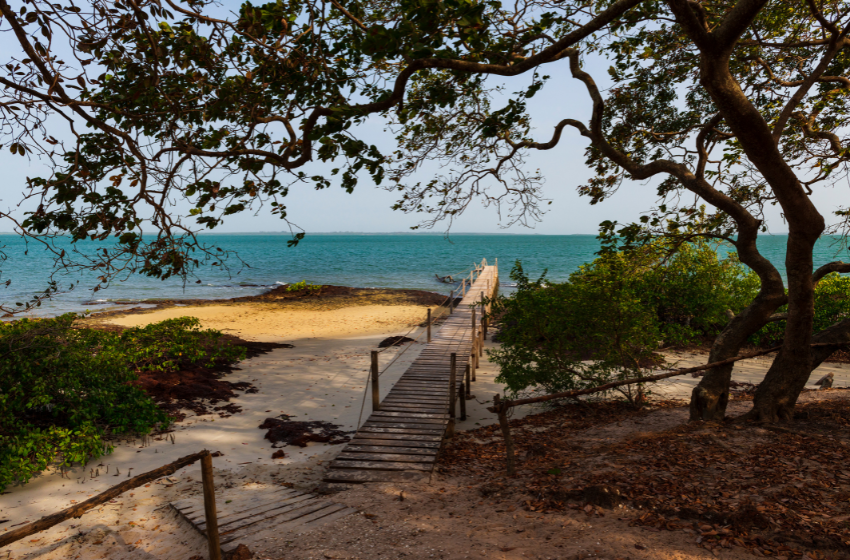
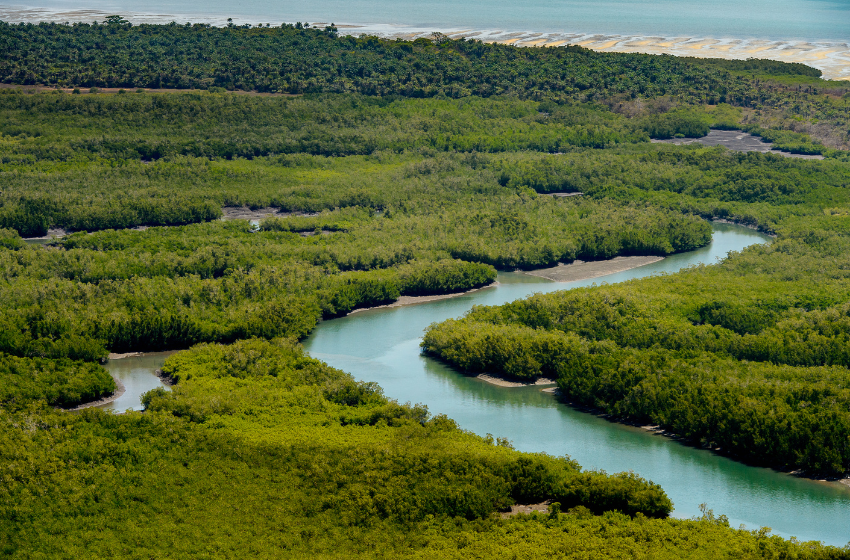
Cacheu River Mangroves Natural Park
You can find the biggest continuous block of mangroves in West Africa at the Cacheu River Mangroves Natural Park. This park is also home to a broad diversity of marine life and birds that migrate from place to place.
7-day Itinerary in Guinea-Bissau
Day 1
Arrive in Bissau
The cultural and historical traditions of the country are deeply rooted in the nation’s political and economic center. Bissau Velho, the historic Portuguese quarter, attracts visitors who want to stroll among its smoky façade. Here, dusty alleyways are still lined with the pink palaces of former Iberian governors. Don’t forget to check out the magnificent Presidential Palace, which has been abandoned since the end of the civil war in Guinea-Bissau. Nearer to the water, Pidjiguiti’s jetties are bustling with activity, with fisherman unloading their catch of the day and piraguas bobbing in anticipation of their departure to the Bissagos Islands. The nightlife is bustling with the sounds of gumbe and West African kizomba, and other must-sees include the magnificent Fortaleza (also a first-rate museum).
Fly into Bissau and check into your accommodation. You can take a quick nap, if your flight was long, or head straight to the streets if it is still early. If it’s the afternoon, go sightseeing in Bissau,. Stop at the National Museum, the Mercado (Central Market), and Porto Pidjiguiti (the historic colonial district).
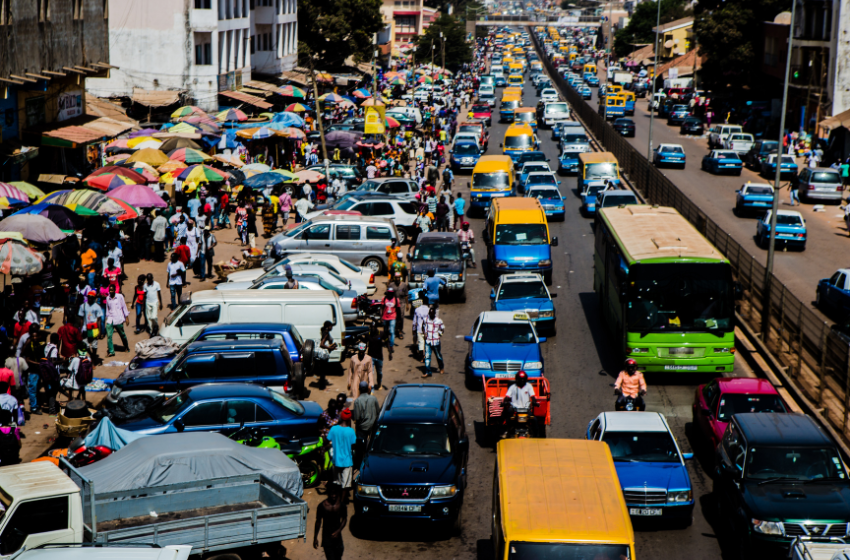
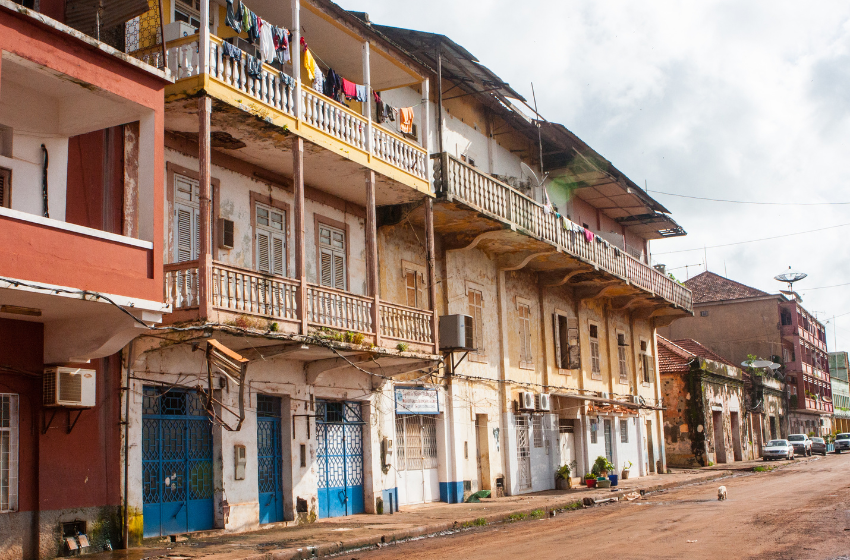
- Backpacker:
- Budget:
- Mid-range:
- Luxury:
Hotel Azalai
When it becomes dark, a foreign city may be twice as dangerous - especially if you don't understand the language and are unfamiliar with the area. There is some reason to be alarmed about walking alone in the city since there is a high crime rate in Bissau, with some of the most prevalent with tourists are pickpockets. You could walk safely at day, but be especially wary while walking at night and be alert in crowded areas or unlit alleys or streets. You can always take taxis, if you don't feel comfortable, Be wary of petty crime by taking precautions mentioned in the safety section above.
From the Airport to Bissau's Center
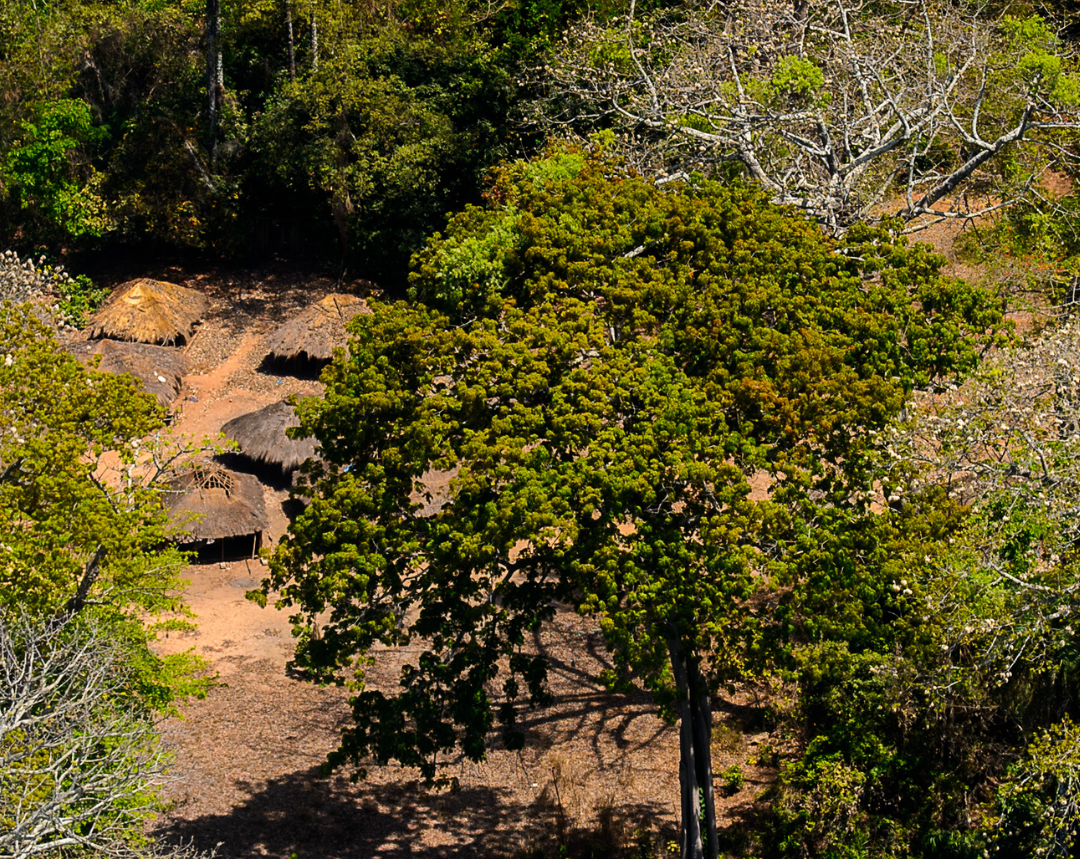
Day 2
Head to Quinhamel
Have a leisurely morning, eat breakfast, and then head to Quinhamel to learn about the fascinating Pepel people’s animist and magical beliefs. This area’s forests conceal a fetish with terrifying powers, and only young males who have been properly initiated are allowed to carry it. Also, stop by a cashew nut plantation, the country’s primary export, and a local rum distillery that has been operating since colonial times.
Day 3
Exploring Rubane and Orango
Orango Grande is one of the crown jewels of the Bissagos Islands and a separate national park in its own right, with hippos galumphing in and out of its brackish lagoons. In fact, tourists from all over the world visit this tiny Atlantic island in order to observe the uncommon salt-water critters up up and personal on a wetland safari through the canals and mangroves. Orango is a popular stop on many visitors’ itineraries to Guinea-Bissau due to its attractive combination of pristine beaches, a single, community-run hotel, and a number of indigenous people groups known for their unique customs and practices.
Leave for Orango Island on a boat right after breakfast. Sea hippos, which are found in the salt water of mangroves, are a common sight on the beaches and in the reserve that they call home. Leave for the Bijagos Archipelago this morning. Bolama Island, the former Portuguese capital of Guinea-Bissau and now a lovely “ghost town,” will be your first stop. The next stop on your trip through the Bijagos Archipelago is Rubane Island, where you will be residing for the duration of your trip.
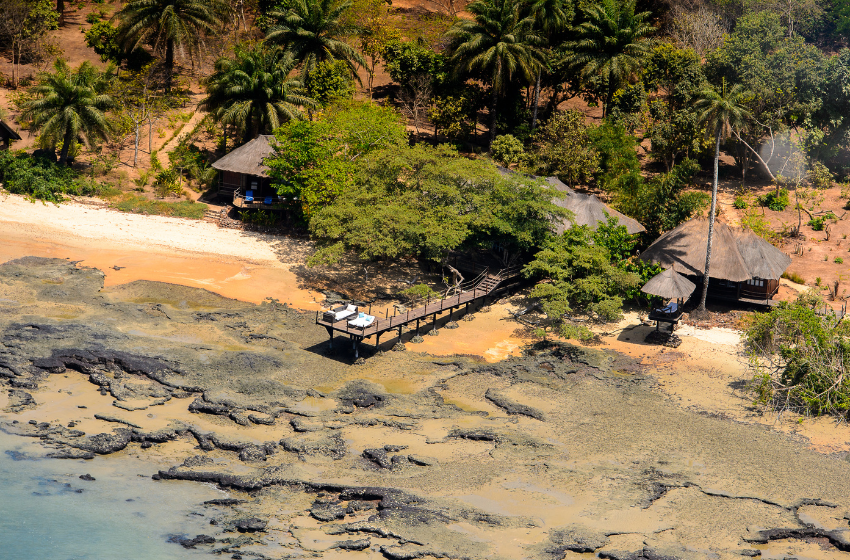

- Backpacker:
- Budget:
- Mid-range:
- Luxury:
Hotel Ponta Anchaca
When it becomes dark, a foreign city may be twice as dangerous - especially if you don't understand the language and are unfamiliar with the area. There is some reason to be alarmed about walking alone in the city since there is a somewhat high crime rate in Rubane, with some of the most prevalent with tourists are pickpockets. You could walk safely at day, but be especially wary while walking at night and be alert in crowded areas or unlit alleys or streets. You can always take taxis, if you don't feel comfortable, Be wary of petty crime by taking precautions mentioned in the safety section above.
From the Conakry to Bel-Air

Day 4
Continue Exploring
Get up early and spend the day fishing. Take in a picnic lunch and then head back to Rubane. Rubane, located five hours by daily ferry from the archipelago’s major city of Bubaque, beckons visitors with its mosaic of lush hinterland woods and powdery white sands.
The beaches here are framed by dense stands of palm trees, broken up only by the occasional bluff or the timber homes of the Ponta Anchaca resort.
The island is dotted with sleepy fishing villages where you can watch local boats bob lazily in the ocean, and it also has countless empty beaches where the sand is a smooth, pale yellow. If you have the time, it’s worth seeing some local performers put up a traditional dance.
Day 5
Island Hopping
Right after breakfast, take a boat back to Bissau. Have the afternoon off to yourself and go out and enjoy the city if you’d like, however, be alert at all times. Later set sail for the Southern Island and make landfall on Meio, a deserted isle where your tracks in the sand will be the only signs of civilization for miles. Then leave for Poilão, an uninhabited island where you could see turtles coming ashore at high tide to nest and lay their eggs (sightings not guaranteed). When you’re done, head back to Rubane to make your way to Bissau.

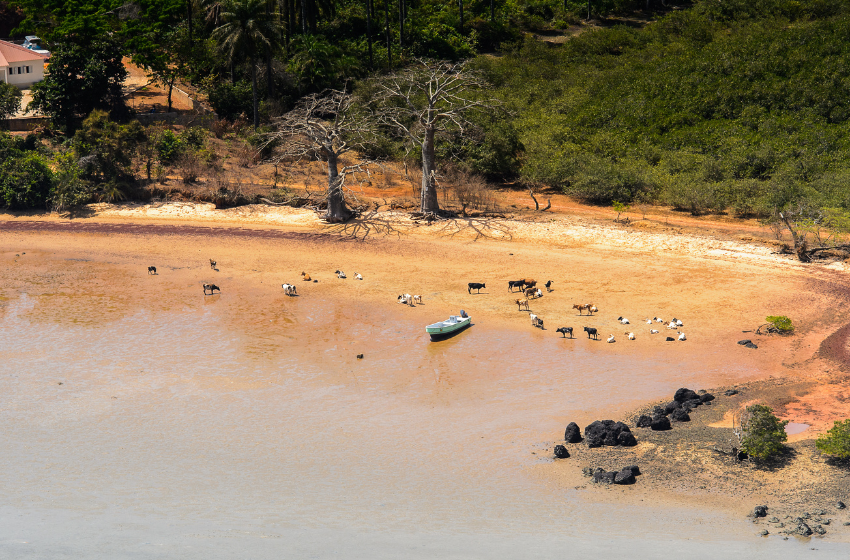
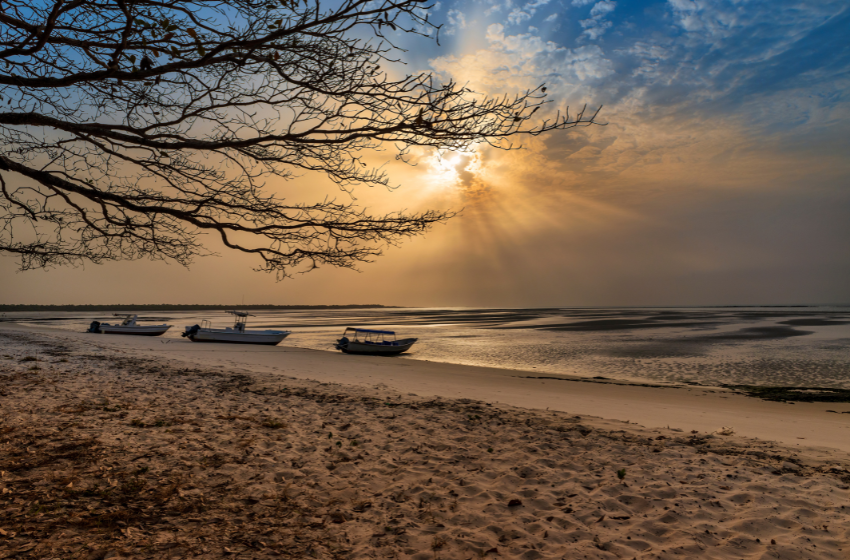
Day 6
Head to Varela
Get out of town and head north-northwest to Varela. Your visit to the Diola homeland also affords us the uncommon opportunity to see one of the Diola people’s distinctive mask dances. When you get to the Varela beaches, it’ll be late in the day. Leave Bissau and travel north-west to witness the sacred mask dances of the Diola people, which are rarely performed for visitors from other cultures. It is believed that when this mask is worn, the spirits come alive and the tiny village becomes lively with drums, dancing, and a colorful multitude. you will likely get to Varela’s shores in the late afternoon.
This beautiful coastline in Senegal’s far north is now protected as a national park, and it connects to the famed Casamance region, which is really adjacent to Varela. In addition, there’s solid justification for this. Check out the dusty dunes where sea grasses bristle in the saline air and the dazzling, scintillating sands of West Africa, which are broken up by the occasional torrent of muddy mangrove rivers and populated by sea turtles. There are even more attractions inland, away from the water: savannah grasslands and deep woodlands; Nile crocodiles and hippos; Djola tribal settlements; and so on.
- Backpacker:
- Budget:
- Mid-range:
- Luxury:
Aparthotel Avo Anisa
When it becomes dark, a foreign city may be twice as dangerous - especially if you don't understand the language and are unfamiliar with the area. There is some reason to be alarmed about walking alone in the city since there is a somewhat high crime rate in Varela, with some of the most prevalent with tourists are pickpockets. You could walk safely at day, but be especially wary while walking at night and be alert in crowded areas or unlit alleys or streets. You can always take taxis, if you don't feel comfortable, Be wary of petty crime by taking precautions mentioned in the safety section above.
From the Conakry to Bel-Air
Day 7
Exploring Varela
You will be passing through some very interesting terrain today, including streams, salt swamps, flooded areas, clay dams, and paddy fields. Felupes and Baiotes, two different ethnic groups from the Diula (jola, Dyula or Djola) people, live in distant communities shaded by giant, solitary Kapok and Baobab trees. If you’re lucky you will see their elaborate rituals and distinctive adobe houses, as well as their sophisticated technological methods for desalinizing the ground for agricultural development. After making your way through the flooded mangrove jungle, you will arrive in Bula, where you meet a monarch of the Manjaco people and hear about their Gendiman customs. The Cab Balugun are places of worship where wooden poles and figurines honoring the spirits of the ancestors are housed.


Day 8
Back home or more?
On your last day, you can choose to either drive back to Bissau to catch the flight back home or to continue your journey to Senegal, crossing the border at the São Domingos checkpoint.
The Most Popular Food in Guinea-Bissau
Since fish is abundant in Guinea and rice (whether farmed locally or imported from Thailand) is inexpensive, this is a common meal for most Guineans. More expensive dishes typically feature meats like beef, goat, chicken, or pork. Palm oil and peanut sauces and an assortment of veggies are also used to prepare meals. In addition to domesticated livestock, Guineans also consume wild/game meat (deer, monkey, beaver, etc.), despite the fact that doing so is not encouraged due to the extinction threat these animals face. The Guinean cuisine can satisfy your cravings for exquisite seafood dishes and other delicacies. Seafood, coconut, palm nuts, cassava, maize, etc. make up the bulk of the local diet, while rice and other staples are imported.

Abacate Com Tuna
This is a typical lunch for most Guineans due to the low cost of fish and the availability of rice (both locally grown and imported from Thailand). Red meats like beef, goat, chicken, and pork are frequently used in high-priced meals. Meals are prepared using a variety of ingredients, including peanut sauces, palm oil, and a wide range of vegetables. Despite the extinction risk these animals face, Guineans eat wild/game meat (deer, monkey, beaver, etc.) in addition to domesticated livestock. Delicious fish dishes and other treats may be found throughout Guinea’s cuisine. The majority of the indigenous cuisine consists of seafood, coconut, palm nuts, cassava, maize, etc., while rice and other basics are imported.

Yassa Chicken
Those who don’t adhere to a vegetarian diet will find that Yassa chicken is a delicious non-vegetarian option. Chicken chunks that have been marinated and cooked until soft are the main ingredient here along with caramelized onions for flavor. Enjoy the wonderful tastes with some plain white rice.
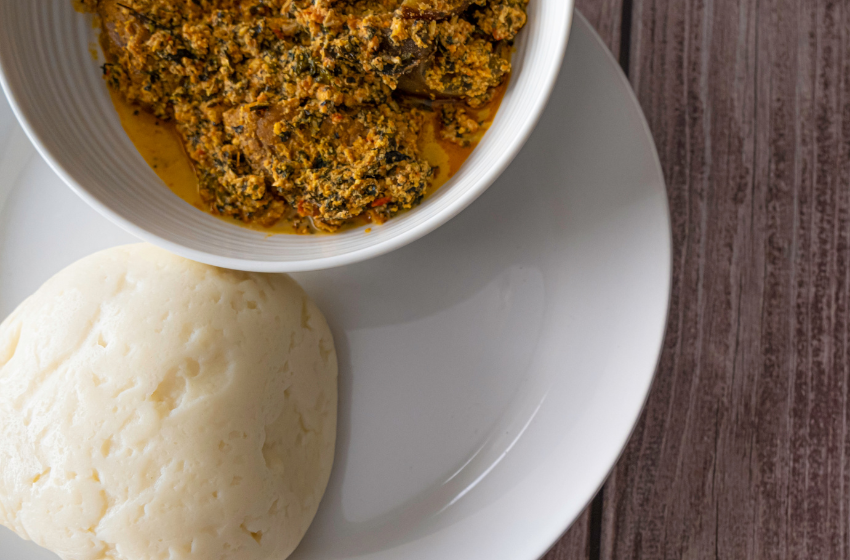
Egusi Soup
In most of West Africa, egusi soup is a staple and a national treasure. Melon seeds, vegetables, and occasionally meat are the mainstays of this cuisine. The final product is a terrific dish that you simply must try.
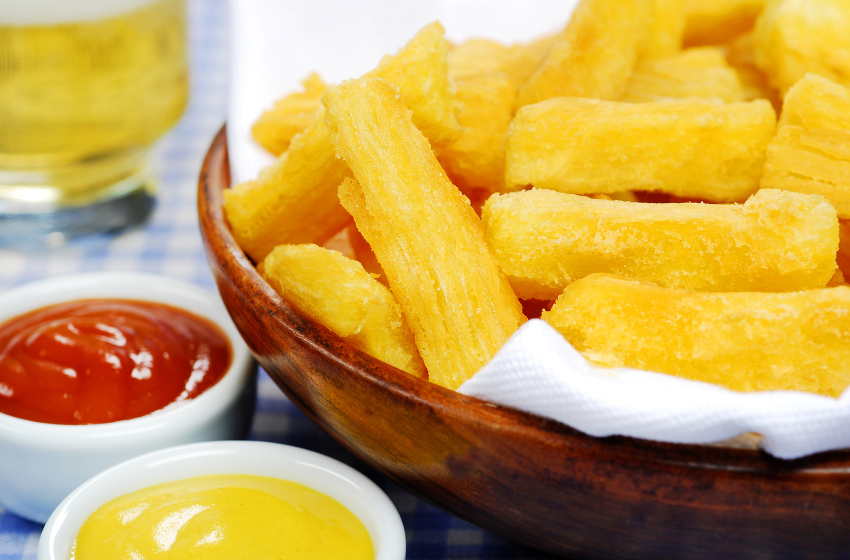
Fried Cassava
Cassava or Yuca fries can make your day if you love fried foods like French fries. Only peeling, simmering, and correctly preparing the Yuca is required for the preparation procedure. Enjoy these fries as an appetizer or a snack.
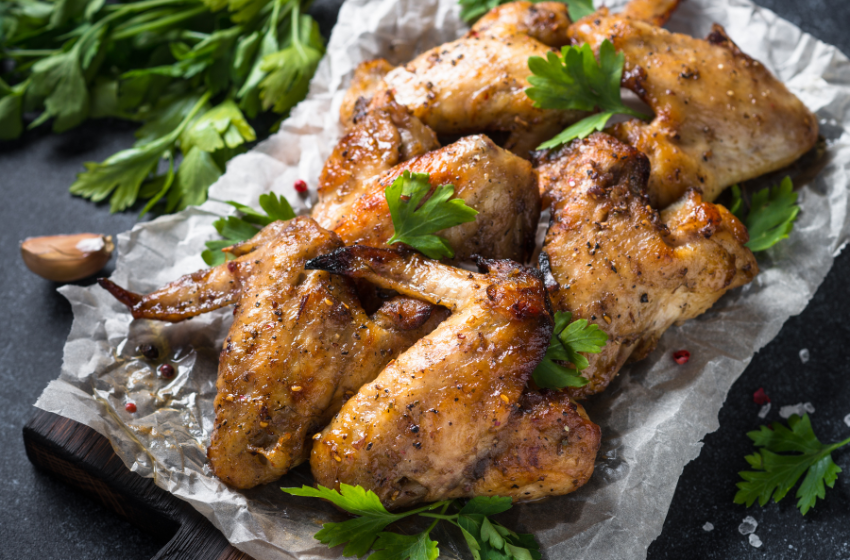
Cafriela de Frango
Cafriela de Frango, a dish made with chicken from Guinea-Bissau, is wonderful. Chicken is grilled till it develops a light brown color after being marinated in a flavorful mixture of ingredients including spicy chili pepper, onions, garlic, lemon juice, salt, and so on. Rice is the perfect complement to this mouthwatering entrée.
What's the Travel Budget for Guinea-Bissau
Flights
- Flights start at roughly $250 from nearby countries. Tickets however on average cost around $770 and can cost way more depending on which class and from which country you depart from.
Accommodation
- Nomad Backpacking style travelers can expect to spend around $250 for a week
- Budget travelers can expect to spend around $450 for a week
- Mid-range travelers can expect to spend around $750 for a week
- Luxury travelers can expect to spend around $1,200 for a week
Food Budget (Three meals and drinks)
- Nomad Backpacking style travelers can expect to spend around $9 per person per day
- Budget travelers can expect to pay around $20 per person per day
- Mid-range travelers on average would cost $25 to $40 per person per day
- Luxury travelers can expect to pay around $45 to $65 per person per day
Overall Budget Styles (Not including Flights, Tours, Transportation, or Car Rental)
- Nomad Backpacking style travelers can expect to spend roughly $450 for a week
- Budget travelers can expect to spend close to $600 for one person for a week
- Mid-range travelers can expect to spend approximately $1,150 for one person for a week
- Luxury travelers can expect to spend around $1,650 for one person for a we7
Flights
- Flights start at roughly $150 from nearby countries. Tickets however on average cost around $750 and can cost way more depending on which class and from which country you depart from.
Accommodation
- Nomad Backpacking style travelers can expect to spend around $130 for a week
- Budget travelers can expect to spend around $210 for a week
- Mid-range travelers can expect to spend around $400 for a week
- Luxury travelers can expect to spend around $750 for a week
Food Budget (Three meals and drinks)
- Nomad Backpacking style travelers can expect to spend around $12 per person per day
- Budget travelers can expect to pay around $20 per person per day
- Mid-range travelers on average would cost $25 to $35 per person per day
- Luxury travelers can expect to pay around $40 to $70 per person per day
Overall Budget Styles (Not including Flights, Tours, Transportation, or Car Rental)
- Nomad Backpacking style travelers can expect to spend roughly $270 for a week
- Budget travelers can expect to spend close to $410 for one person for a week
- Mid-range travelers can expect to spend approximately $780 for one person for a week
- Luxury travelers can expect to spend around $1,430 for one person for a we7
Flights
- Flights start at roughly $150 from nearby countries. Tickets however on average cost around $750 and can cost way more depending on which class and from which country you depart from.
Accommodation
- Nomad Backpacking style travelers can expect to spend around $130 for a week
- Budget travelers can expect to spend around $210 for a week
- Mid-range travelers can expect to spend around $400 for a week
- Luxury travelers can expect to spend around $750 for a week
Food Budget (Three meals and drinks)
- Nomad Backpacking style travelers can expect to spend around $12 per person per day
- Budget travelers can expect to pay around $20 per person per day
- Mid-range travelers on average would cost $25 to $35 per person per day
- Luxury travelers can expect to pay around $40 to $70 per person per day
Overall Budget Styles (Not including Flights, Tours, Transportation, or Car Rental)
- Nomad Backpacking style travelers can expect to spend roughly $270 for a week
- Budget travelers can expect to spend close to $410 for one person for a week
- Mid-range travelers can expect to spend approximately $780 for one person for a week
- Luxury travelers can expect to spend around $1,430 for one person for a we7
Flights
- Flights start at roughly $150 from nearby countries. Tickets however on average cost around $750 and can cost way more depending on which class and from which country you depart from.
Accommodation
- Nomad Backpacking style travelers can expect to spend around $130 for a week
- Budget travelers can expect to spend around $210 for a week
- Mid-range travelers can expect to spend around $400 for a week
- Luxury travelers can expect to spend around $750 for a week
Food Budget (Three meals and drinks)
- Nomad Backpacking style travelers can expect to spend around $12 per person per day
- Budget travelers can expect to pay around $20 per person per day
- Mid-range travelers on average would cost $25 to $35 per person per day
- Luxury travelers can expect to pay around $40 to $70 per person per day
Overall Budget Styles (Not including Flights, Tours, Transportation, or Car Rental)
- Nomad Backpacking style travelers can expect to spend roughly $270 for a week
- Budget travelers can expect to spend close to $410 for one person for a week
- Mid-range travelers can expect to spend approximately $780 for one person for a week
- Luxury travelers can expect to spend around $1,430 for one person for a we7
If you want to know what to pack, read this list below:
- This is a conservative West African country with warm weather that tends to get hot in the summer and rainy in the winter, dress accordingly
- Raincoat or Light Waterproof Jacket
- Hiking Boots or Sturdy Sneakers (Shoes You Don’t Mind Getting Wet)
- Sunscreen
- Insect Protection – Repellent and Clothing
- Sunglasses and Sun Hat
- Water Shoes
- Beach Towels/Sarong
- Dry Bag
- Money Belt or Cross Bag
- Portable Medical Kit
- Flashlight or Headlamp
- Copies of your passport.
- Get all the needed vaccinations before traveling
- A power bank is a must in any travel.
- Always have some cash with you just in case there are no ATMs and if you are dealing with a business that solely accepts cash
- Get yourself an adapter for your gadgets
- 1 toothbrush
- 1 tube of toothpaste
- 1 razor
- 1 package of dental floss
- 1 small bottle of shampoo
- 1 small bottle of shower gel
- 1 towel
- Deodorant
- Band-Aids
- Hydrocortisone cream
- Antibacterial cream
- Earplugs
- Tylenol
- Hand sanitizer (germs = sick = bad holiday)
- A key or combination lock
- Zip-lock bags
- Plastic bags (great for laundry)
- Universal charger/adaptor
- LifeStraw (A water bottle with a purifier)
- 1 dry shampoo spray & talc powder
- 1 hairbrush
- Makeup you use
- Hairbands & hair clips
- Feminine hygiene products
Clothing For Boys
- 1 pair of jeans or khaki pants
- 1 pair of shorts
- 1 bathing suit
- 5 T-shirts
- 1 long-sleeved T-shirt
- 1 pair of flip-flops
- 1 pair of sneakers
- 6 pairs of socks
- 5 pairs of boxer shorts
Clothing For Girls
- 1 swimsuit
- 1 sarong
- 1 pair of stretchy jeans
- 1 pair of leggings
- 2-3 long-sleeve tops
- 2-3 T-shirts
- 3-4 spaghetti tops
- 1 light cardigan
Want to plan your own trip, here are some of the best resources that can help you
- Skyscanner – They search small websites and budget airlines that larger search sites tend to miss. They are hands down the number one place to start.
- Momondo – This is another favorite flight search engine because they search such a wide variety of sites and airlines. Always check here too.
- Booking.com – The best all-around booking site that constantly provides the most affordable and lowest rates. They have the widest selection of budget accommodation.
- Couchsurfing – This website allows you to stay on people’s couches or spare rooms for free. It’s a great way to save money while meeting locals who can tell you the ins and outs of their city. The site also lists events you can attend to meet people (even if you’re not staying with someone).
- Intrepid Travel – If you want to do group tours, go with Intrepid. They offer good small group tours that use local operators and leave a small environmental footprint.
- Grassroots Volunteering – For volunteering, Grassroots Volunteering compiles a list of good local volunteer organizations that keep the money within the community.
- Get Your Guide – Get Your Guide is a huge online marketplace for tours and excursions. They have tons of tour options available in cities all around the world, including everything from cooking classes, walking tours, street art lessons, and more! It has the world’s largest collection of things to do with more than 30,000 activities in 7500 destinations.
- SafetyWing – Safety Wing offers convenient and affordable plans tailored to digital nomads and long-term travelers. They have cheap monthly plans, great customer service, and an easy-to-use claims process that makes it perfect for those on the road.
- Trip Advisor: Check the reviews and then book your accommodation. TripAdvisor is where you go when you want to compare prices with multiple accommodation providers.
- VRBO: is the main search engine to use when you are looking for a home or apartment rental. It can sometimes be cheaper than hotels and it is the best way to stay in areas that offer a more local feel.
- Hostelworld: With one of the largest databases of hostels in the world, Hostelworld is the go-to site when you are looking for budget accommodation.
- Rome 2 Rio: If you want to see how to get somewhere by plane, train, bus, ferry, or car Rome2Rio lays it all out for you as well as related costs.
- World Nomads Insurance: When traveling you should always have travel insurance. We have found the best bang for your buck is by far World Nomads.
Final Thoughts on Guinea-Bissau
Guinea-Bissau is appealing for many reasons, despite its shortcomings, including its rich history and culture, which can be seen in its traditional and ancient buildings and rural landscapes, its unusual and beautiful landmarks, not to mention the Bijagos Biosphere Reserve, a UNESCO World Heritage Site, and the conservation Zones teeming with wildlife. The unbelievable warmth the locals give and the warm weather, its exciting events and festivities, and its vivid picture-perfect surroundings of highlands and pristine forests, ideal for spotting the beautiful wildlife. Evidence suggests that Guinea-Bissau’s history extends back much further than 3,000 BC. A piece of a fallen West African civilization and a meeting point for a number of different cultures; one of the top travel destinations. With its stunning scenery, wide variety of wildlife, and intriguing historical sites, Guinea-Bissau may not be a popular tourist destination, but activities including its vast forests or witnessing the beautiful sunsets in the highlands, or a beach may intrigue you. Are you planning on going on a trip to Guinea-Bissau?
Have you ever been to Guinea-Bissau? Post your thoughts, questions, and concerns down below.